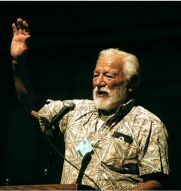This week I have ventured out to help out at a private animal rescue facility. I’ve written about how many dogs are too many before and I wanted to revisit the topic again.
Although there are many well meaning people who engage in animal rescue, there is a fine line between what you can do reasonably and crossing over a line of managing too many numbers. This is where you need to get help or delegate over to others or otherwise risk venturing into the animal hoarding realm.
The Psychiatric Times looked at the animal hoarding topic sometime back but I see a trending problem in many of the private rescue agencies. One recent glimpse made me pause to consider the fine line.
In many cases, the numbers rise simply because no home is deemed good enough for placement. (If you have been reading this blog a while you might remember my rant on animal rescue nazis.)
Now although there may be exceptions, I have experienced mostly unregulated private efforts. Those efforts seem to fail to work together with similar groups. Some may have a loose relationship, or ties with others, on occasion but I hear a lot of squabbling.
Then there are the “rescues” where they actually purchase the animals from an idiot who was breeding substandard animals. I’ve never figured out why.
In my mind, this just perpetuates the trade and if the animals are not in good health or up to breed standards. Wouldn’t euthanasia be more appropriate? And then how about the lack of consequences for the person creating all the problems?
Seriously, is a life of hell and instability from moving from place to place really considered humane?
I’ve been to a number of rescue places over the years and the people mean well. But I see behavior dynamics well above the skill set of the people who are keeping the critters.
Then there is the sheer numbers of animals. Sure, if you keep them feed and the place clean, that is a good thing. But I also think there is more to maintaining animal than just the bare minimum.
If you cannot provide good activity, outside socialization, regular training, mental occupation–are you a dismal failure–or are these efforts dismissed as not important enough to ponder or provide?
Also, if you are going to rescue a certain breed, is it humane to allow the addition of other species when you have to keep them sequestered for their health and safety?
Then, is it okay when you don’t have enough help to get you through the day to provide all they need?
I say no but then I don’t maintain a large group of commercially bred animals. Yep, you read that right. Pet breeding is a commercial activity–whether you are in the sanctioned crowd or not.
Anyway, I’ve been hearing a lot about another area rescue that is run by an elderly matron. She is reported to have something like 90 or so animals in her care. I highly doubt she is able to manage that many animals.
As a professional, I know there is a limit to how many animals one person can manage in a good setting, never mind one that isn’t set up for optimal management. And don’t even try to tell me how an elderly person is supposed to manage hoards of animals, it is hard enough when you are in good shape.
So this week I am looking forward to doing some training and loving on the animals I am helping out. It is a mixed group but they all know me and it should be an interesting adventure.
In the meantime, I hope you will chime in with your thoughts about animal management and care for groups such as rescues, animal fostering homes, and others that might come to mind. Just leave your comments below.
 My uncle
My uncle 
